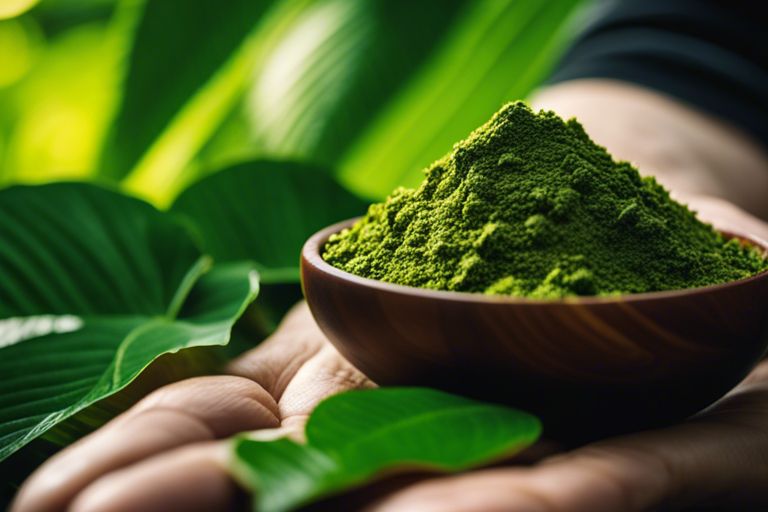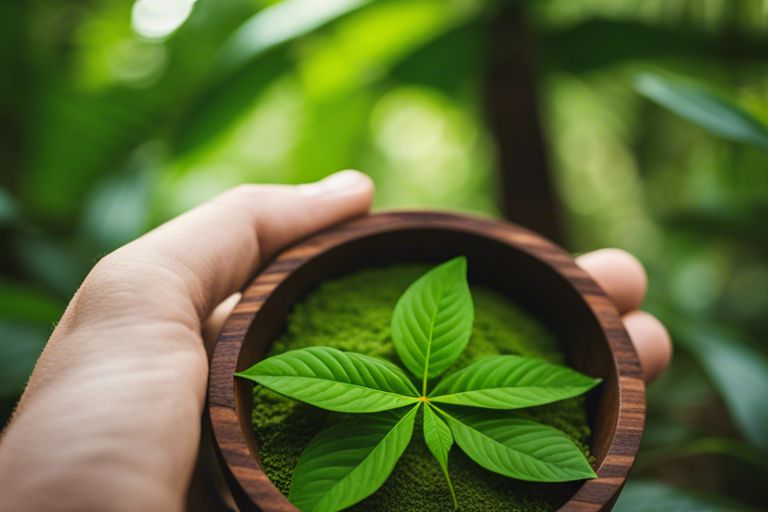Pain-relief is just one of the many health benefits of kratom that has garnered attention in recent years. This natural herb, native to Southeast Asia, has been used for centuries for its medicinal properties. From anxiety relief to mood enhancement, kratom offers a range of positive effects. However, it is crucial to understand the proper dosage and potential side effects to harness its therapeutic benefits effectively.
Key Takeaways:
- Pain Relief: Kratom has been traditionally used to relieve chronic pain, acting as a natural alternative to pharmaceutical painkillers.
- Mood Enhancement: Kratom can provide mood-boosting effects by releasing endorphins and serotonin, potentially helping with conditions like anxiety and depression.
- Increased Energy: Certain strains of kratom can act as a stimulant, providing users with increased energy levels and improved focus and concentration.

History and Background of Kratom
For centuries, kratom has been a part of Southeast Asian cultural traditions. The use of kratom can be traced back to ancient times, where it was consumed for its stimulating effects and as a natural pain reliever. In countries like Thailand and Malaysia, kratom leaves were chewed or brewed into tea for their energizing properties and to help workers endure long hours of labor in the fields.
Origins and Traditional Use
The indigenous people of Southeast Asia have long revered kratom for its medicinal and therapeutic properties. The leaves of the Mitragyna speciosa tree contain active compounds that interact with the body’s opioid receptors, providing pain relief and boosting mood and energy levels. In traditional practices, kratom was also used to treat diarrhea, alleviate fatigue, and manage other health conditions.
Modern-Day Popularity and Controversies
Origins of Kratom’s modern-day popularity can be traced back to the internet age, where its use spread beyond Southeast Asia to other parts of the world. As a natural alternative for managing pain and improving well-being, kratom gained a following among individuals seeking holistic remedies. However, its increasing popularity also brought about controversies and regulatory challenges.
Another aspect contributing to kratom’s controversies is the lack of regulation and standardized dosages, leading to potential misuse and safety concerns. Despite its potential benefits, kratom has been associated with addiction, withdrawal symptoms, and adverse effects when used inappropriately or in excess. It is crucial for users to exercise caution and seek guidance from healthcare professionals when considering kratom for medicinal purposes.
Chemical Composition and Mechanism of Action
Alkaloids and Their Effects
Some of the key components in kratom responsible for its effects are alkaloids. The main alkaloids present in kratom include mitragynine and 7-hydroxymitragynine. These alkaloids interact with the opioid receptors in the brain, producing pain-relieving and mood-enhancing effects. Mitragynine acts as a partial agonist at the μ-opioid receptors, while 7-hydroxymitragynine is even more potent, leading to enhanced analgesic properties.
Interactions with the Body’s Systems
An understanding of kratom’s composition sheds light on its interactions with the body’s systems. Kratom alkaloids bind to the opioid receptors in the brain, creating analgesic and euphoric effects. Additionally, kratom’s alkaloids interact with other neurotransmitter systems such as serotonin and dopamine, contributing to its mood-enhancing properties.
For instance, the interaction of kratom with the opioid receptors can result in pain relief similar to that of opioids, but with less risk of respiratory depression. However, it’s crucial to note that kratom can still lead to dependence and withdrawal symptoms if used excessively or inappropriately.

Pain Relief and Management
Opioid-Like Effects Without the Risks
Many people turn to kratom for its potential to provide pain relief comparable to opioids, but without the high risk of addiction and respiratory depression associated with traditional opioid use. Kratom interacts with opioid receptors in the brain, which can help alleviate pain sensations, making it a popular choice for individuals seeking natural alternatives to manage their discomfort.
With kratom, users may experience pain relief similar to prescription medications, but with a reduced likelihood of developing dependence or tolerance. Additionally, kratom’s analgesic properties can be beneficial for individuals with chronic conditions that cause ongoing pain.
Chronic Pain and Inflammation Reduction
For chronic pain sufferers, kratom offers a potential solution to manage symptoms and improve quality of life. By targeting pain pathways and reducing inflammation, kratom may offer relief for conditions such as arthritis, fibromyalgia, and migraines. The alkaloids present in kratom leaves have shown anti-inflammatory properties, which can help alleviate pain associated with chronic inflammation.
Another benefit of kratom for chronic pain management is its ability to enhance mood and promote relaxation. By addressing both the physical sensation of pain and the emotional toll it takes, kratom can provide holistic relief for individuals dealing with long-term discomfort.
Mood Enhancement and Anxiety Relief
All kratom strains can offer mood enhancement and anxiety relief due to their interaction with the brain’s natural neurotransmitters.
The Role of Serotonin and Dopamine
With kratom consumption, alkaloids like mitragynine interact with the opioid receptors in the brain, leading to the release of neurotransmitters like serotonin and dopamine. These neurotransmitters are known to play a crucial role in regulating mood, emotions, and stress levels. By influencing these chemicals in the brain, kratom can help improve mood and provide relief from anxiety.
Reducing Stress and Promoting Relaxation
To reduce stress and promote relaxation, kratom’s sedative effects can help calm the mind and body, leading to a sense of peace and well-being. Users often report feeling a significant reduction in stress levels and an overall improvement in their ability to relax and unwind.
Another benefit of kratom in promoting relaxation is its ability to provide pain relief. Chronic pain can contribute to stress and anxiety, and kratom’s analgesic properties can help alleviate physical discomfort, leading to a more relaxed state of mind.
Energy and Cognitive Function
Increasing Productivity and Focus
Unlike caffeine or other stimulants, kratom provides a smooth and sustained energy boost without the jitters or crashes. This natural supplement works by activating the brain’s delta receptors, which leads to increased focus and productivity. Users have reported feeling more alert and attentive after taking small doses of kratom.
Enhancing Mental Clarity and Motivation
Cognitive function can be significantly improved with the use of kratom. It enhances mental clarity by increasing neurotransmitter activity in the brain, promoting sharper thinking and better decision-making. Kratom also boosts motivation levels, helping individuals stay on task and achieve their goals more effectively.
Motivation is a key component in staying productive and reaching milestones. Kratom’s ability to enhance motivation can be incredibly beneficial for those struggling to find the drive to complete tasks or pursue their objectives. By sharpening mental clarity and boosting motivation, kratom can be a valuable tool for individuals looking to optimize their cognitive function.
Immune System and Digestive Health
Boosting Immunity and Fighting Infections
Now, let’s probe into how kratom can benefit the immune system. Kratom is known to boost the body’s immunity and help in fighting infections. Its alkaloids have antioxidant properties that can protect the immune system from oxidative damage and enhance its overall function. By strengthening the immune system, kratom can help the body fight off bacterial and viral infections more effectively.
Soothing Digestive Issues and Inflammation
Any discussion about kratom’s health benefits would be incomplete without mentioning its positive effects on digestive health. Kratom is known for its anti-inflammatory properties, which can help soothe digestive issues such as irritable bowel syndrome (IBS) and inflammation in the gut. The compounds in kratom can calm the stomach lining and promote healthy digestion.
Immune system health and digestive well-being are crucial aspects of overall health, and kratom’s immune-boosting and anti-inflammatory properties make it a valuable complementary remedy for those looking to improve their immune system function and alleviate digestive discomfort.
What are the specific health benefits of using KratomKaps compared to other forms of kratom?
KratomKaps offers the distinct benefits of kratomkaps compared to other forms of kratom. The encapsulated powder provides a convenient and precise way to consume kratom. It also helps mask the taste, making it easier to ingest. Additionally, the capsules are easy to carry and store, allowing for on-the-go use.
What Are the Specific Health Benefits of Kratom for Inflammation?
Kratom for inflammation relief has been found to have specific health benefits that include reducing pain and swelling. The active compounds in kratom can act as anti-inflammatory agents, making it a potential natural remedy for various inflammatory conditions. Studies have shown its potential in managing inflammation and associated discomfort.
Potential Risks and Side Effects
Despite the potential health benefits of kratom, it is crucial to acknowledge the risks and side effects associated with its use. According to a recent article on News Medical discussing the debate about the plant’s safety, there are concerns regarding the possible dangers of kratom consumption.
Addiction and Dependence Concerns
Side effects of kratom use can include addiction and dependence issues. While kratom may offer relief for some individuals dealing with chronic pain or opioid withdrawal symptoms, there is a potential for addictive behaviors to develop over time. This risk underscores the importance of using kratom responsibly and under the guidance of a healthcare professional.
Interactions with Medications and Contraindications
Dependence on kratom can also lead to interactions with medications and contraindications. It is crucial to be cautious when using kratom alongside other substances, as negative interactions can occur. Individuals taking medications should consult with their healthcare provider before incorporating kratom into their routine to avoid any adverse effects.
To ensure the safe and effective use of kratom, individuals should educate themselves about potential risks and side effects. It is always recommended to seek guidance from a healthcare professional before using kratom, especially if you are currently taking medications or have underlying health conditions.
To wrap up
From above, it is evident that kratom, when used responsibly and in moderation, can offer several health benefits. From pain relief to mood enhancement and increased energy levels, kratom has shown promising effects for those seeking alternative remedies. However, it is crucial to emphasize the importance of consulting a healthcare professional before incorporating kratom into one’s daily routine, as individual reactions may vary.
FAQ
Q: What is kratom?
A: Kratom is a tropical tree native to Southeast Asia. Its leaves have been used for centuries for their various health benefits.
Q: What are the health benefits of kratom?
A: Kratom has been traditionally used to relieve pain, increase energy, improve mood, and reduce stress and anxiety.
Q: How does kratom work in the body?
A: Kratom contains active compounds that interact with opioid receptors in the brain, producing effects similar to opioids but with milder side effects.
Q: Is kratom safe to consume?
A: When taken in moderate amounts, kratom is generally considered safe for most people. However, like any substance, it can be abused and may lead to negative side effects.
Q: How can kratom be consumed for its health benefits?
A: Kratom leaves can be chewed, brewed into tea, smoked, or ingested in capsules. It’s necessary to start with a low dose and gradually increase as needed.









